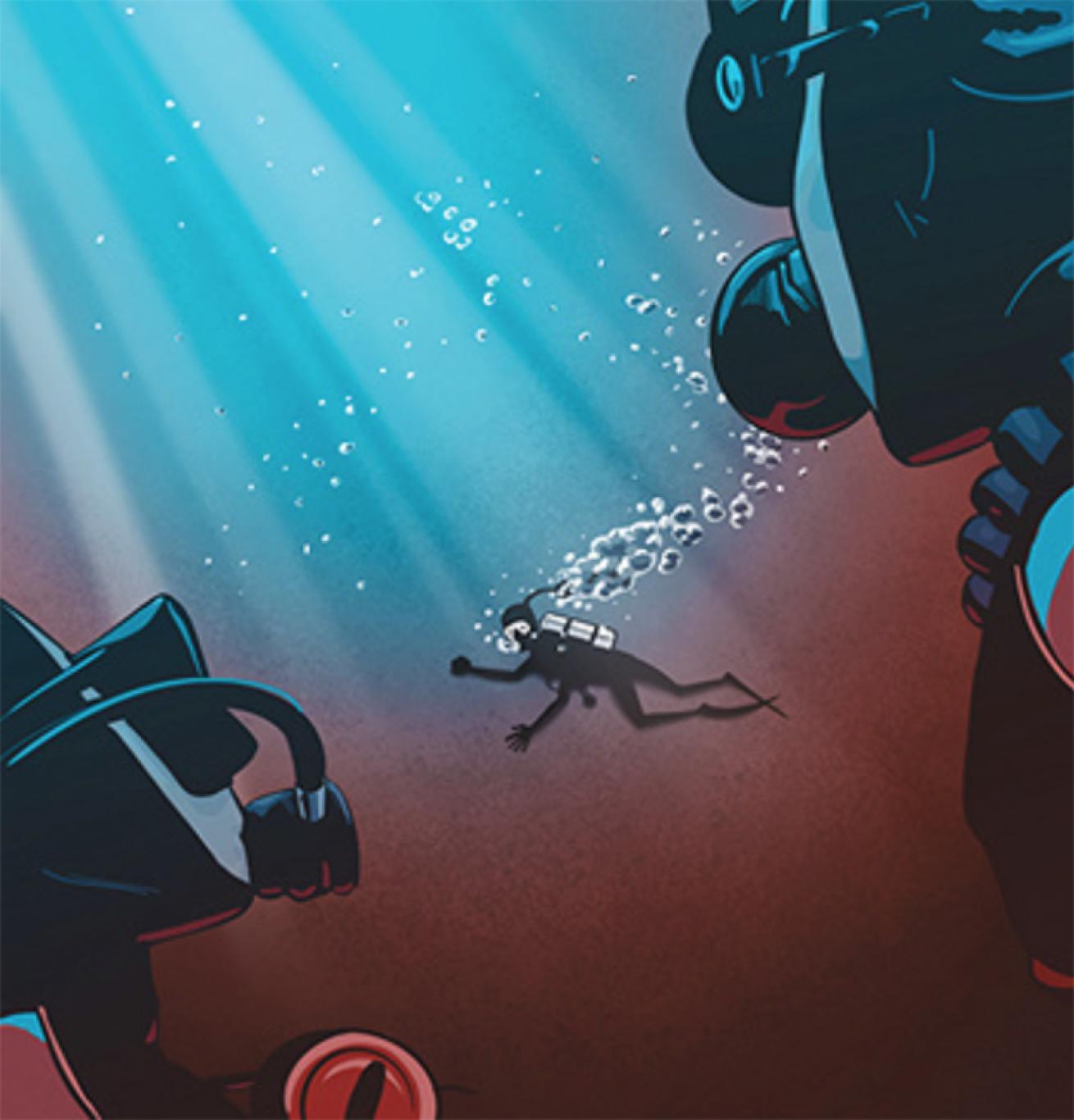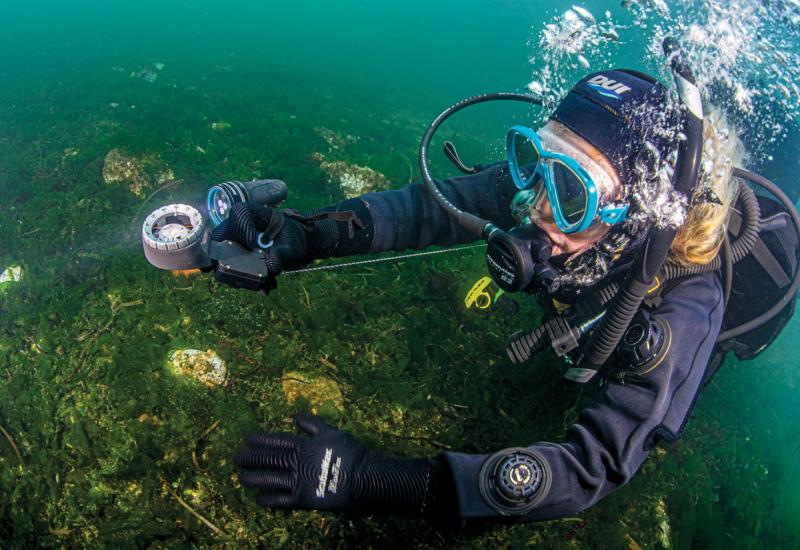Panic Flow | Lessons for Life

Steven P. HughesA free-flowing regulator cascades out of control.
The hulking shipwreck sprawled across the ocean floor at just over 200 feet of seawater. Karl and his friends were all enjoying the dive until Karl’s regulator began to malfunction.
The Diver
Karl was a 55-year-old male . He was rated as a Master Scuba Diver and had training in mixed-gas diving. All in all he was an experienced and comfortable diver. He had no known medical issues.
The Dive
Karl and the other technical divers on board had planned a decompression dive for that afternoon. Conditions were good to explore the wreck.
Everyone on the local charter boat that day had technical diving experience. The divers who were diving on open-circuit scuba were using a combination of travel gas mixtures on the descent. They planned to switch to additional tanks with a different mixture for breathing at depth. Each additional tank was attached to its own regulator. In addition to the divers on open-circuit scuba, there were also closed-circuit rebreather divers on board.
The Accident
About halfway through the planned dive, Karl swam to his buddy in a hurry and pointed to his regulator. His buddy saw that his regulator was out of his mouth and free-flowing. Karl then pointed over his left shoulder, signaling the other divers to turn off the valve connected to the tank with the malfunctioning regulator. His buddy shut the valve, but Karl didn’t immediately switch to his backup regulator on his other tank.
At that point, Karl’s buddy attempted to donate his alternate regulator, but Karl seemed to believe the regulator didn’t work. His buddy could clearly see the panic in Karl’s eyes. Moments later, Karl lost consciousness. His buddy attempted to force the regulator into his mouth, but it quickly became clear that Karl wasn’t breathing on his own.
The remaining divers had mandatory decompression before they could ascend. They made the decision to send Karl to the surface, hoping the boat crew would be able to spot him and resuscitate him on board. At first, they tried to inflate his BCD, but they realized his low-pressure inflator was not connected. Instead, they added air to Karl’s drysuit and jettisoned some of his weights to make him positively buoyant.
The boat crew spotted Karl on the surface and brought him on board, but their resuscitation attempts were unsuccessful.
Analysis
Technical diving comes with its own risks. One of those risks is that divers who are making planned decompression dives cannot ascend directly to the surface in an emergency. Even though there isn’t a physical barrier over their heads, they still have to operate as if there is, just like in a cave or under ice.
Often, divers making technical dives carry multiple tanks, each with its own regulator and breathing-gas mix. Each piece of that gear is considered life-saving equipment that has to be working correctly.
Even if you are making a relatively easy dive under perfect conditions, the way you respond if a problem occurs is what matters the most.
There is no indication that Karl felt uncomfortable before the dive, based on testimony from his buddies. But when his primary regulator malfunctioned, he didn’t react properly. Instead of breathing through the free-flowing regulator like every open-water diver is taught to do, or switching to a different regulator, or reaching out to his buddy for an alternate air source, Karl panicked. He swam around without a regulator in his mouth while his body became hypoxic. He first lost consciousness, and soon after, his heart stopped beating.
While Karl was doing a dive most recreational divers will never make, the takeaway lesson is the same. Mitigate problems before they have a chance to get out of control and before your mind stops working through the options.
Skills fade over time, especially if you don’t practice them regularly. In diving, rescue skills should be second nature. Most divers never think to practice removing their mask underwater, finding a dropped regulator or breathing from an alternate air source. The same is true for breathing from a free-flowing regulator. Practicing skills long after the initial class can save your life.
Following the accident, the authorities examined Karl’s equipment, which was all in good working order—except for the unattached power inflator, which should have been connected. Additionally, gas-analysis findings came back within standard specifications.
Lessons For Life
- Practice emergency skills. Take some time in the water to practice basic drills—especially at the beginning of the dive season if you’ve been out of the water for a while. This can make the difference between a simple inconvenience and major problem.
- Have your dive equipment serviced regularly. Dive equipment is life-support equipment, and it requires regular maintenance.
- Do a buddy check. In the desire to get in the water, it’s easy to forget to do a simple buddy check, but it can avert problems later. Not that it would have necessarily changed the outcome of this scenario, but Karl’s buddy would have caught the disconnected low-pressure inflator and saved time on the bottom.
Correction: This article initially stated that tec divers rely on their suits for buoyancy control when diving, and BCDs are only used for positive buoyancy on the surface. This is incorrect and the statement has been removed from the story.










